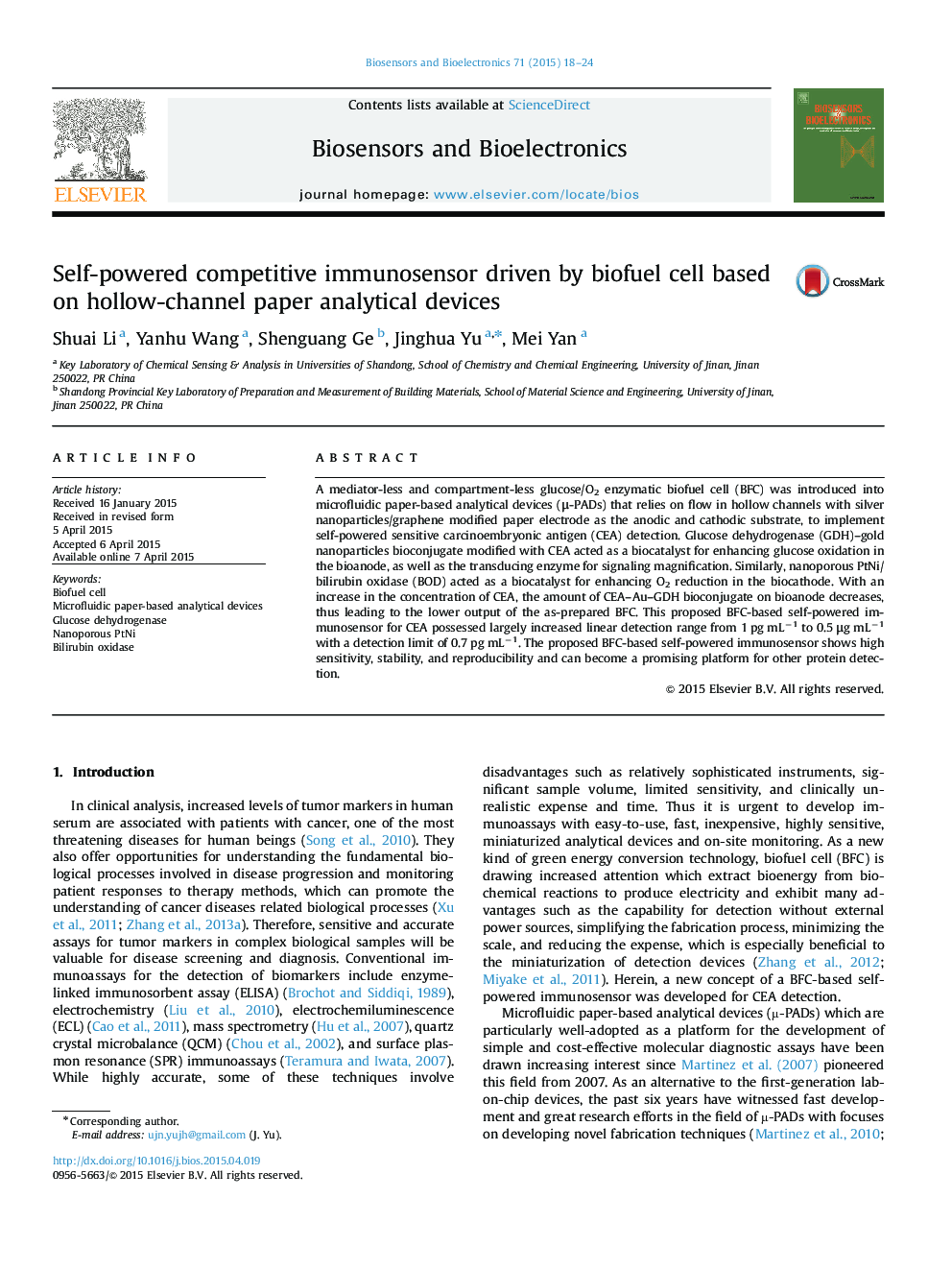| Article ID | Journal | Published Year | Pages | File Type |
|---|---|---|---|---|
| 7231832 | Biosensors and Bioelectronics | 2015 | 7 Pages |
Abstract
A mediator-less and compartment-less glucose/O2 enzymatic biofuel cell (BFC) was introduced into microfluidic paper-based analytical devices (μ-PADs) that relies on flow in hollow channels with silver nanoparticles/graphene modified paper electrode as the anodic and cathodic substrate, to implement self-powered sensitive carcinoembryonic antigen (CEA) detection. Glucose dehydrogenase (GDH)-gold nanoparticles bioconjugate modified with CEA acted as a biocatalyst for enhancing glucose oxidation in the bioanode, as well as the transducing enzyme for signaling magnification. Similarly, nanoporous PtNi/bilirubin oxidase (BOD) acted as a biocatalyst for enhancing O2 reduction in the biocathode. With an increase in the concentration of CEA, the amount of CEA-Au-GDH bioconjugate on bioanode decreases, thus leading to the lower output of the as-prepared BFC. This proposed BFC-based self-powered immunosensor for CEA possessed largely increased linear detection range from 1 pg mLâ1 to 0.5 μg mLâ1 with a detection limit of 0.7 pg mLâ1. The proposed BFC-based self-powered immunosensor shows high sensitivity, stability, and reproducibility and can become a promising platform for other protein detection.
Keywords
Related Topics
Physical Sciences and Engineering
Chemistry
Analytical Chemistry
Authors
Shuai Li, Yanhu Wang, Shenguang Ge, Jinghua Yu, Mei Yan,
